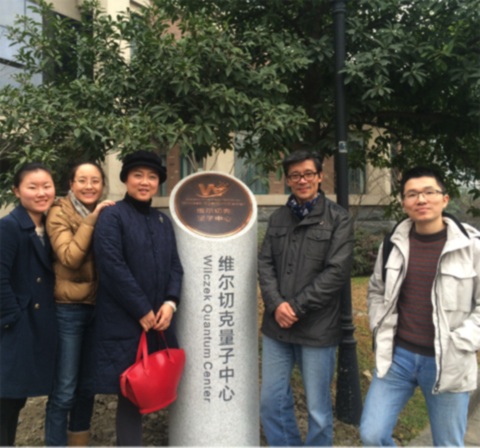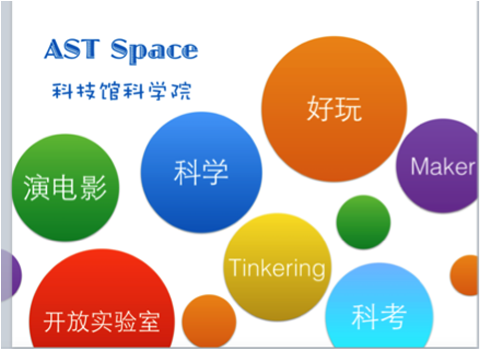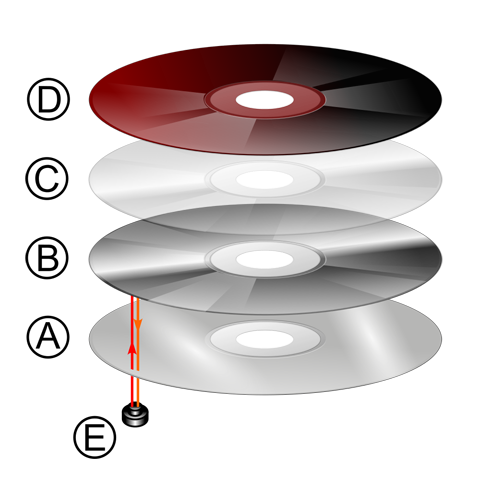
ZAST visits WQC to discuss science outreach
The newly established Wilczek Quantum Center (WQC) aspires not only to scientific achievement, but also to making science more widely known to the general public. On 5 January, 2015, a team led by Shidan Zhang, the director of the Department of International Affairs of Zhejiang Association for Science and Technology (ZAST), visited WQC, to discuss future close cooperation on popular science outreach. ZAST devotes major resources to science outreach in China.
WQC Associate director Hongwei (Henry) Xiong and other members of Wilczek Quantum Center attended this meeting, as did six others from the College of Science of Zhejiang University of Technology (Prof. Jianqing Shi, Prof. Chenghua Sui, Prof. Zhixu Xu, Dr. Qiang Wu and Dr. Minglei Fu.)
ZAST members Jiongjiong Chen and Bing Zhu gave a wonderful introduction to popular science outreach. Shidan Zhang introduced the structure and role of the Department of the International Affairs and expressed their support of Wilczek Quantum Center. In particular, she spoke highly of Frank Wilczek's visit to Hangzhou and of ZJUT's establishment of the Wilczek Quantum Center, which has great potential to contribute to China's future.
Professor Jianqing Shi (the Party Committee Secretary of the College of Science of ZJUT) expressed a warm welcome to ZAST and support for this cooperation. Many novel and exciting ideas were proposed in the meeting to make the cooperation a great success, e.g. the use of low-temperature liquid nitrogen to demonstrate interesting phenomena, the explanation of long-time storage CD, and demonstration of earthquake waves for the public.
Zhejiang Association of Science and Technology (ZAST) is an organization for scientists and engineers in Zhejiang Province founded in 1958. It is made up of 146 professional chapters in the field of natural sciences. Its interest covers a board spectrum concerning the advancement of engineering, medical sciences and agricultural sciences and the promotion of knowledge in science and technology.
ZAST is a member-based organization with a membership of 150,000. Members are affiliated with many local universities, research academies, government institutions, as well as from industries within the Province. Membership is granted to only those with middle level or higher professional qualifications.
ZAST services are delegated to its constituent departments and centers, such as: Department of Membership Affairs and Academic Exchange, Department of International Affairs, Department for Science and Technology Dissemination, Department of Public and Media Relations, Center for Science and Technology Consulting, Center for Continuing Education, Publication Office for the “Science 24-hours” Magazine and Science and Technology Journal, Center for Educational Audio and Visual Materials, and Zhejiang Museum of Science and Technology Museum.
Currently, ZAST employs 150 staff members. It is governed by the Zhejiang Provincial Science and Technology Representatives Congress, and its Board of Directors.
ZAST’s day to day responsibilities include:
- Promoting academic exchange for the advancement of sciences and science education;
- Popularizing scientific knowledge to retain the interest in and curiosity in Science;
- Providing policy-making technology oriented consulting services to various social and government sectors for a healthy economic and social development;
- Providing continuing education programs and extra-curricular science programs to its members and students for better understanding of modern sciences;
- Undertaking international academic exchange activities, and sponsoring and organizing international academic conferences;
- Representing opinions, comments, and demands of scientists and technicians in the government policy-making and strategies stipulation processes for the protection of legal rights of the intellectuals in the society in China;
- Advocating in China for protection of intellectual rights.

ZAST's Department of International Affairs sent a delegation to WQC on 5 January, 2015. From left to right: Yao Yao, Yifei Tang, Shidan Zhang (director), Bing Zhu (vice director), Jiongjiong Chen.

The ZAST International Department engages in many kinds of science outreach. For example, on 11 January they will be hosting a "Tinkering event" in Hangzhou's West Lake Cultural Square.

Diagram of CD layers (from Wikimedia.)
A. A polycarbonate disc layer has the data encoded by using lands and pits.
B. A reflective layer reflects the laser back.
C. A lacquer layer is used to prevent oxidation
D. Artwork is screen printed on the top of the disc.
E. A laser beam reads the polycarbonate disc, is reflected back, and read by the player.